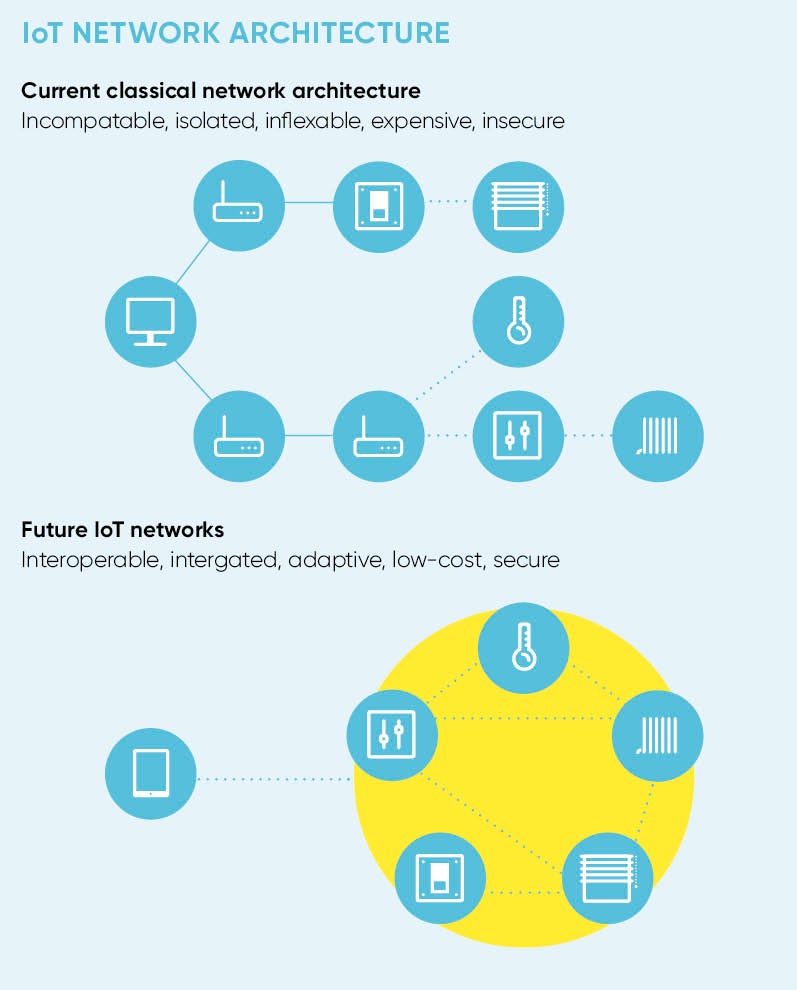In the rush to develop the internet of things (IoT), device makers have focused on how their own products get online and there has been little standardisation.
The danger is that the default solution is to have complex hardware and software systems that require a central unit to act as both controller and translator, often relying on the cloud to link devices that are just a few metres apart.
Lemonbeat believes there is an alternative and has devised a universal software framework – a set of building blocks or services – for microcontrollers that allows users to develop smart devices swiftly and easily. A common language enables those smart devices to interact with each other directly and independently, allowing the IoT to operate as simply and effectively as possible.
The benefits of direct device interaction are increased speed, reduced need for infrastructure, less disruption from internet downtime and high levels of security.
This ability to bring intelligence out of the cloud and on to even the simplest devices – sometimes referred to as an edge-based solution – eases the burden on the network and accelerates the performance of the whole system.
A common standard for developing smart things for the IoT will serve users better
The ability to adopt a common language has huge implications and potential benefits for a wide range of applications, including smart homes, smart buildings, smart energy and industry 4.0.
Started in 2015, Lemonbeat is a subsidiary of European energy group innogy. It calls its language Lemonbeat Smart Device Language (LsDL) and even though it boasts that it is groundbreaking, it believes it will prove popular because it is based on the XML language familiar to programmers and developers.
The technology is already used in the SmartHome product range of Innogy, and in the garden watering systems and robot lawnmowers made by Gardena.
This year Lemonbeat announced a collaboration with electrical components maker Phoenix Contact to work on building automation technology, with a focus on reducing the amount and complexity of hardware to increase efficiency and bring down costs.
Other areas where it sees a take-up in the near future include smart meters for utilities and electric vehicle charging points.

Lemonbeat managing director Oliver van der Mond likens their concept of universal building blocks to the genotype or working instructions that living organisms carry. “It’s like the DNA for the IoT. Communication is controlled in a decentralised manner, similar to a biological organism,” he says.
To make sure devices can communicate, it can be used on LoRa, wi-fi and ethernet networks, but the company has also developed its own Lemonbeat Radio product for transmitting on the sub-GHz radio spectrum on which many IoT devices will run. In general it uses standard internet technologies such as IPv6.
It consumes very little energy, so is particularly useful for so-called constrained devices such as sensors that rely on battery power.
Lemonbeat is determined not to work on the development of its framework in isolation and is keen to fuel a debate on how a common language can be used to the benefit of all users of the IoT, from manufacturers of devices and equipment, to commercial building managers and production line operators.
It is working with Web of Things Interest Group, part of World Wide Web Consortium (W3C,) to develop a common web standard and is a member of Europe’s EEBus initiative to focus on standardisation in the IoT across sectors including energy, homes and buildings, and connected devices such as domestic appliances.
Mr van der Mond concludes: “A common standard for developing smart things for the IoT will serve users better, just as HTML does for building websites. We think it is important to collaborate so that we can share our know-how and expertise with others. Therefore, we engage with partners across a wide range of backgrounds.”
For more information please visit www.lemonbeat.com


